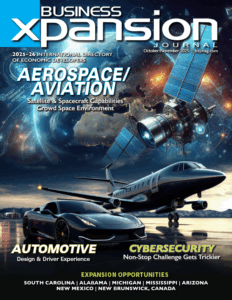
Opportunity Zones
14 Apr, 2020
BY MARY BURKE BAKER, Government Affairs Counselor, K&L Gates LLP
Recently issued final Opportunity Zone (“OZ”) regulations are good news for anyone interested in creating or expanding an operating business. The new rules include many mechanisms and safe harbors intended to provide operating businesses the certainty and flexibility they need to utilize the OZ incentive as part of their capital stack.
THE OZ BASICS
OZ is intended to incentivize investments in economically challenged areas in order to bolster the local economy and create jobs. Individuals and businesses that invest capital gains in Qualified Opportunity Funds (“QOF”) can defer paying tax on those gains until 2026, receive a step-up in basis, and enjoy federal tax-free treatment on gains if they hold their investment in the QOF at least ten years.
OZ IS FOR BUSINESSES TOO
While most early OZ investments were in real estate, Congress and the administration intended that OZ could be a powerful tool to stimulate the creation and expansion of operating businesses, and the final regulations are designed accordingly.
Following are just a few features of the final rules demonstrating this.
- A 62-month safe harbor gives startups over five years to launch a business without worrying whether the business is meeting all of the OZ requirements.
- Relaxed leasing rules make it easier for existing property owners to utilize the incentive.
- A cure period gives a business failing to meet the qualified opportunity zone business (“QOZB”) requirements six months to remedy the failure.
- Gains arising from sales of assets or businesses by a QOZB are eligible for the 10-year exclusion election even if the investor does not sell his or her interest in the QOF.
- Aggregation rules make it easier to meet the substantial improvement test.
- Vacancy rules and special rules for brownfields and government property make it easier to meet the original use test.
- Safe harbors and exceptions for mobile property used both inside and outside an OZ make it easier to meet the tangible property use test.
- Straddle rules make it easier to meet the 50% gross income test and 70% tangible property test.
- A safe harbor allows a de minimis amount of space or revenues to be associated with a “sin” business, like a spa, tanning salon, liquor store, gaming facility, or golf course.
The OZ rules are complex and can seem overwhelming, but they also are flexible and business friendly. If you are planning to start or expand an operating business you could be leaving money on the table if you don’t consider the OZ incentive as a source of capital. Seek competent counsel familiar with the statute and regulations to determine if OZ is a good fit for your business.
This publication is for informational purposes and does not contain or convey legal advice. The information herein should not be used or relied upon in regard to any particular facts or circumstances without first consulting a lawyer. Any views expressed herein are those of the author(s) and not necessarily those of the law firm’s clients.
Mary Burke Baker is a government affairs counselor in the Washington, D.C. office of K&L Gates where she leads the tax policy practice and co-leads the Opportunity Zone practice. Ms. Baker focuses on federal tax matters affecting businesses, including domestic and multinational corporations and pass-through entities. She advocates on behalf of clients and consults with and advises Congressional and Executive Branch officials, including the U.S. Treasury and Internal Revenue Service, on numerous domestic and international tax and tax policy issues such as the Opportunity Zone incentive, implementation of business and individual provisions in the TCJA, digital taxation and emerging cryptocurrency tax compliance concerns. Since enactment of the Tax Cuts and Jobs Act (TCJA) in December, 2017, Ms. Baker has particularly focused on the Opportunity Zone incentive and is a frequent speaker on the topic throughout the United States.
Side Note
Indian River County, Florida – Central to Where Your Business Needs to Be Indian River County – Vero Beach, Sebastian, Fellsmere – strikes a perfect balance between business and pleasure. Those who live, work or visit Florida’s Central East Coast area find that the local communities are safe and loaded with ecological, cultural, educational and technological amenities. Many C-level executives have located their companies here because of the executive’s positive vacation experience.
Located on Florida’s east coast, midway between West Palm Beach and Cape Canaveral, Indian River County is within 3 hours of over 17-million consumers, or 90% of Florida’s population. The county offers competitive property tax rates, and no state income tax.
And now with the Opportunity Zone initiative, investors have an even greater reason to consider Indian River County, FL. All properties west of I-95 in Indian River County are designated as an Opportunity Zone. This includes the City of Fellsmere, a rural community in the northwestern portion of the county with thousands of acres of developable land and quick access to I-95.
The O-Zone also includes two shovel-ready industrial parks located ½ mile west of I-95 along SR60. The Indian River Park of Commerce is home to a 400,000sf CVS distribution center and has 90 acres available for lease. The Vero West Business Park has 54 acres available for sale and is the future home of Boston Barricades. State and local incentives are also available to relocating and expanding companies, including property tax abatement, tax refunds, and job training grants.
Because location is central to success, Indian River County isn’t just where you want to be – it’s central to where your business ought to be. For more information on locating your company to Indian River County, Florida, call Helene Caseltine, Economic Development Director with the Indian River Chamber of Commerce, at 772-567-3491 or email her at helenec@indianrivered.com. Visit their website at www.indianrivered.com.











